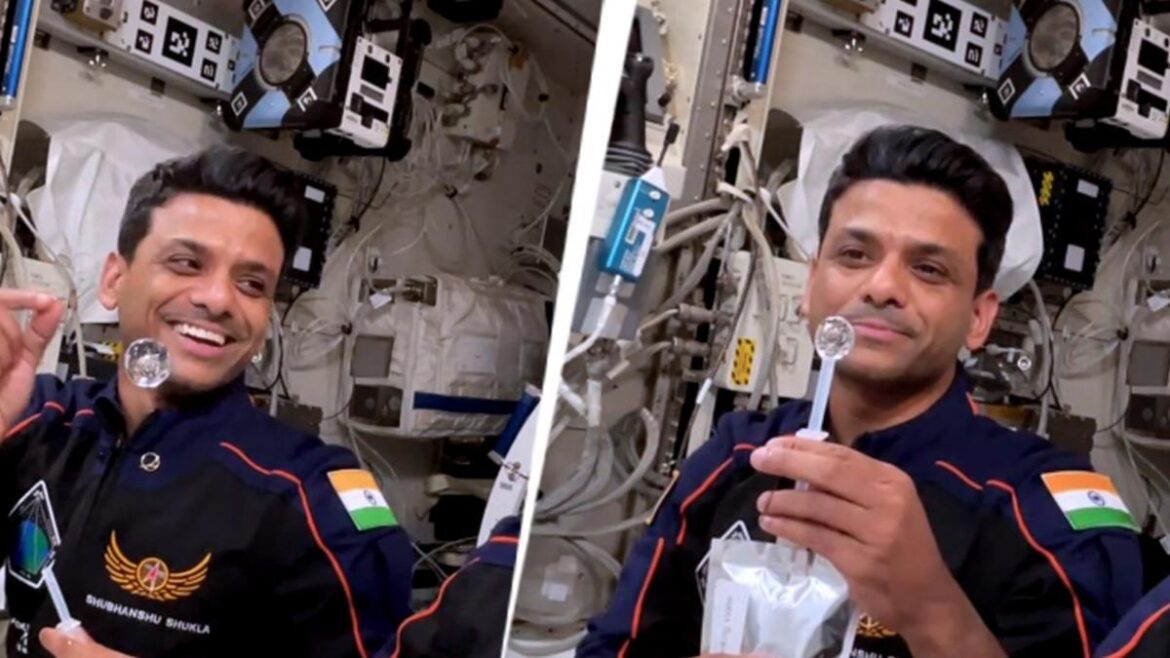Indian Astronaut Shubhanshu Shukla Touches Down After 18 Days in Space
With a gentle splash into the Pacific Ocean, history was made. On Tuesday, July 15, at precisely 3:01 pm IST, the SpaceX Dragon spacecraft ‘Grace’ safely returned from orbit, carrying Group Captain Shubhanshu Shukla and three international crew members. Their 18-day expedition aboard the International Space Station marked a monumental step in India’s evolving space journey.
As boats retrieved the crew near the Californian coast, medical teams conducted initial health checks, and helicopters prepared to ferry the astronauts for a brief period of Earthbound reconditioning. The mission—dubbed Axiom-4—wrapped up an extraordinary chapter in human spaceflight. For India, this was more than just a first; it was also a glimpse into what lies ahead.
Timeline of the Axiom-4 Mission
Nothing in space is rushed, and this mission was no exception. Here’s how it unfolded:
- June 25: Liftoff from Kennedy Space Center, Florida
- June 26: Docked with the International Space Station
- July 13, 4:50 pm IST: Crew undocks from the ISS
- July 15, 3:01 pm IST: Splashdown in the Pacific Ocean
The mission took just over 22 hours to travel back to Earth following departure from the ISS. During their time aboard the station, the multinational team conducted over 60 experiments.
A Deep Scientific Dive
Space is the ultimate laboratory. From testing medical innovations to studying the viability of agriculture in microgravity, the crew got busy. While not all results are public yet, some early findings are promising. One project looked at how different plants adapt to space conditions. Another tried to understand how zero gravity impacts neural pathways.
These insights may be crucial not only for long-term stays in space but also for improving farming and healthcare techniques back on Earth. And while many questions remain unanswered, that’s often the point, isn’t it?
Official Statements: National Pride Soars
“I join the nation in welcoming Group Captain Shubhanshu Shukla as he returns to Earth from his historic mission to Space,” PM Narendra Modi posted on X. “As India’s first astronaut to have visited International Space Station, he has inspired a billion dreams through his dedication, courage and pioneering spirit.”
Modi continued, noting the significance for India’s space program: “It marks another milestone towards our own Human Space Flight Mission — Gaganyaan.”
NASA also acknowledged the successful conclusion of the mission, emphasizing its role in ongoing international cooperation and private sector growth.
Global Crew, Shared History
Shukla wasn’t alone. The Ax-4 crew included:
- Commander Peggy Whitson – a seasoned NASA astronaut now with Axiom Space
- Slawosz Uznanski-Wisniewski – representing Poland
- Tibor Kapu – from Hungary
Interestingly, for Poland and Hungary, this marked a return to crewed space missions after decades. Maybe not everyone noticed, but many space enthusiasts did.
Community Response: A Nation Watches
In schools, on social media, and in living rooms across India, the return of Shubhanshu Shukla was followed with keen interest. Young students posted handmade posters, and scientists from ISRO commented on the symbolic value of the mission.
On X, top trends included “Shubhanshu Shukla”, “Axiom-4”, and “Indian in Space”. Voices ranged from schools to veteran researchers, united in pride and anticipation.
And somewhere in Bangalore, one student tweeted: “Watching an Indian astronaut on the ISS felt like seeing the future. Welcome back, Captain.” Something about that hits deep.
What’s Next for India’s Space Program?
While Axiom-4 was an international mission, its impact on India’s space goals is direct. Shukla’s participation not only demonstrated India’s growing aerospace capability but also laid a foundation for what’s expected to come in 2027: the Gaganyaan mission.
ISRO confirmed that the learnings from this mission will support astronaut training, expedition planning, and tech development tailored to India’s goals. While hurdles remain — like long-duration crew survival and life-support systems — this mission acted as a crucial live rehearsal.
To quote a senior ISRO official who asked not to be named, “Where we go from here might define the next decade of Indian space science.” That might sound dramatic, but it’s not untrue.
About Axiom and SpaceX
Axiom-4 was the 18th crewed flight by SpaceX and a key stepping stone for Axiom Space. They’re not just flying astronauts—they’re planning to build a commercial space station to replace the ISS when NASA retires it around 2030.
Elon Musk’s company provided the Dragon spacecraft. Axiom, a private operation headquartered in Houston, managed the training and mission logistics. The partnership between these firms and international governments is, well, becoming more common. Not everyone agrees with privatizing access to space, but it’s happening.
Reflection: A Quiet Revolution
You might not feel it from a single mission. But something shifted. Seeing an Indian flag onboard the ISS, however briefly, changes perception. For youngsters with dreams of stars and galaxies, this mission says something profound — the sky is not the limit.
While Gaganyaan 2027 lies ahead, the journey has already begun. And perhaps, just perhaps, we’ll look back at this splashdown as the moment everything started coming together.
Heading Towards Tomorrow
There’s no doubt this mission will be studied for months, maybe years. But for now, the astronauts rest. Shubhanshu Shukla, back on solid ground, just made history a little more reachable for the rest of us.
Welcome home, Captain.

